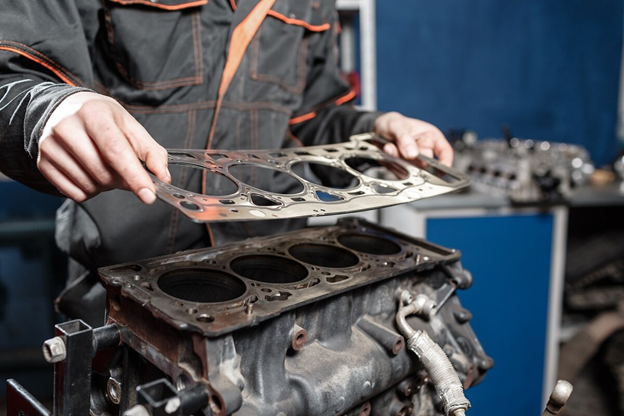Your vehicle has hundreds of components, both big and small, from the front to the back bumpers. Your car needs all of these components to operate efficiently on the road. A gasket is one of those tiny components that you might not give much thought to. Automotive engine gaskets are a common type of sealing and cushioning material used between two surfaces that are fastened together with bolts. When working on the engine, mechanics frequently replace the gasket. Look at the engine block and cylinder head, two of the essential parts of the internal combustion engine.
Let’s understand how different types of the gasket are used in automotive engines:
Manifold Gasket:
Most car engines feature a manifold gasket in addition to a head gasket. The manifold gasket, called the intake gasket, is in charge of sealing the mating surface between the manifold and the cylinder head. Of course, the engine’s cylinders are visible in the cylinder head. The manifold must be crossed for air and coolant to enter the cylinder head. The manifold and the cylinder head are where the manifold gasket is located. It stops the leakage of these fluids, notably coolant and air, similar to the engine head gasket.
Oil pan gasket:
Oil pours through oil ports inside the engine when it is running, lubricating the working parts. The oil pan, connected to the base of the crankcase, serves as the container for the oil. The oil pan gasket is a seal and a cushion between the oil pan and the crankcase. The oil pan gasket is constructed from sturdy materials like rubber-coated aluminized steel or a rubber compound. This seal makes up for expansion and contraction brought on by temperature variations. The cushion stops damage from occurring when there are vibrations.
Camshaft Gasket:
The majority of automobile engines also use a camshaft gasket. Usually, they are smaller than manifold and head gaskets. In general, camshaft gaskets are fashioned like little rings. The purpose of these O-ring gaskets is to seal the camshaft or camshafts. Some automobile engines only require a single camshaft gasket since they only have one camshaft.
The Head Gasket:
The head gasket must seal the mating surface between the cylinder head and the engine block. The top of the best engine gasket is the cylinder head, and the bottom is the engine block. However, both parts contain passageways for oil, coolant and combustion gases. A head gasket is utilized to stop the leakage of these substances near the mating surface of the cylinder head and engine block. The head gasket forms a leak-proof seal when it is positioned between the cylinder head and engine block.
Conclusion
Gaskets are necessary for automotive engines to operate correctly. Mechanical gaskets seal the mating surfaces of two or more components, and the head gasket seals the engine blocks and the cylinder head’s mating surfaces. So, when choosing the best engine gasket, without any doubt, go with the best engine gasket kit manufacturers like Garima solution to get excellent benefits.



